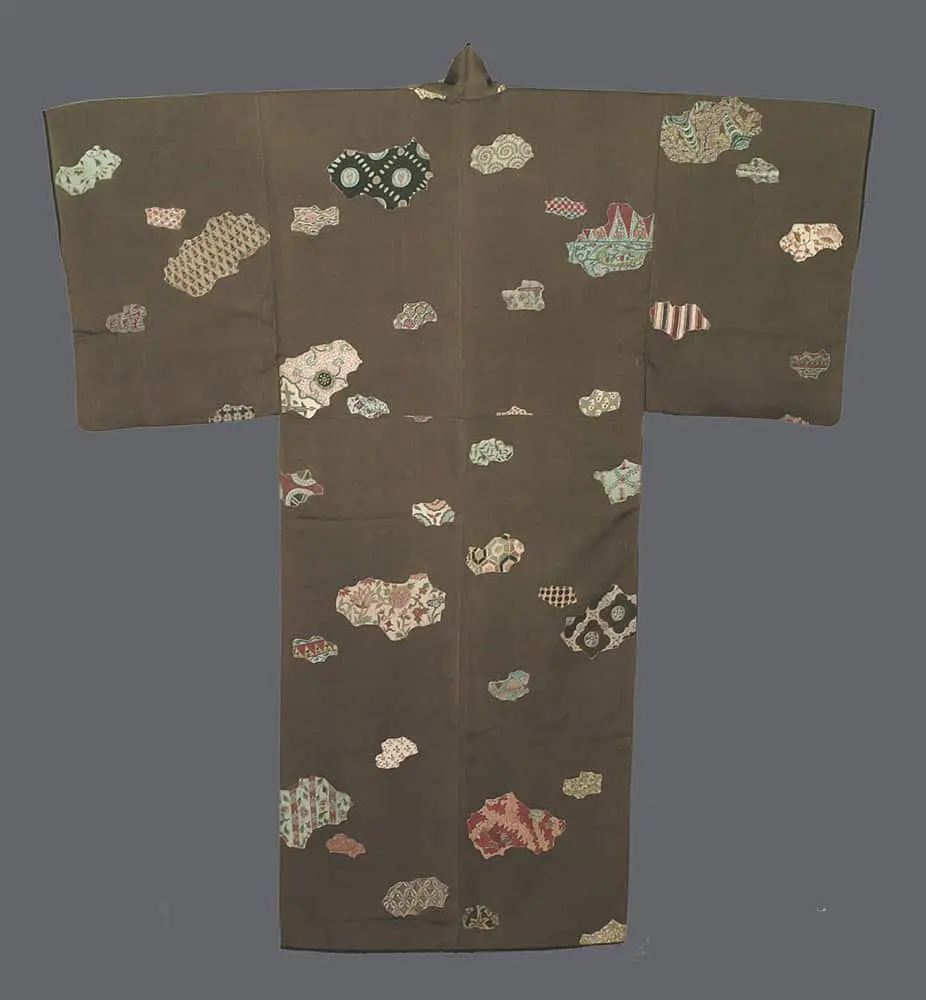This remarkable men's kimono represents an extraordinary example of sarasa-inspired textile artistry, where each scattered motif functions as a miniature masterpiece of hand-painted decoration applied through the painstaking technique of pigment penciling on dense shioze silk. The garment's understated olive-brown ground serves as a neutral canvas that allows the diverse collection of decorative elements to appear like precious fragments of various textile traditions, creating a composition that suggests both scholarly appreciation for pattern diversity and the refined taste of the merchant class during this period of cultural flourishing.
The artistic approach demonstrates the period's sophisticated understanding of Indian sarasa (chintz) designs, which had captivated Japanese artisans since their introduction through Dutch trade in the 17th century. Each applied motif represents a different pattern vocabulary—geometric lattices, floral medallions, paisley derivatives, and abstract ornamental forms—executed with the precision that only hand application could achieve. The detail image reveals the extraordinary craftsmanship involved, showing how individual threads of the shioze weave create tiny ridges that hold the pigment, resulting in patterns that seem to emerge organically from the fabric's structure. This technique, far more labor-intensive than resist-dyeing or printing methods, allowed for subtle color variations and precise detail work that gives each motif its own character while maintaining overall compositional harmony.
The cultural significance of this garment extends beyond its technical achievement to reflect the cosmopolitan sensibilities of urban Japan during the bakumatsu and early Meiji periods. The seemingly random distribution of motifs actually follows carefully considered principles of asymmetrical balance derived from classical Japanese aesthetics, while the foreign-inspired patterns demonstrate the period's openness to international influence. For a man's garment, this level of decorative complexity suggests either ceremonial use or the wardrobe of someone in the arts or merchant trades, where such sophisticated pattern knowledge would be appreciated. The choice to scatter individual motifs rather than create unified repeat patterns reflects the Japanese concept of mono no aware—finding beauty in fragmentary, transient moments—while the preservation of each pattern's distinct identity within the larger composition embodies the period's balance between cultural preservation and innovation.
There are notable large stains on the inside lining. The measurements are 52 inches (132 cm) from sleeve-end to sleeve-end and 54 inches (137 cm) in height.
.avif)
































